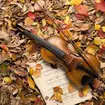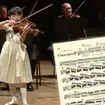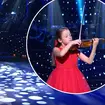Vivaldi's South American legacy
Piazzolla's Las Cuatro Estaciones Porteñas was one of Vivaldi’s most unexpected legacies and it gets a fine new recording
Composer: Piazzolla
Repertoire: Las Cuatro Estaciones Porteñas;
Artists: Sinfonía Buenos Aires; Bandoneón Concerto Tianwa Yang (vln), Daniel Binelli (bdn), Nashville Symphony Orchestra/Giancarlo Guerrero
Rating: 5/5
Genre: Orchestral
Label: NAXOS 8.572271
The Music: Anyone tempted to label Antonio Vivaldi’s music as too highly stylised, of-its-time and emotionally restricted might want to glance in the direction of Buenos Aires. It was there – in streets alive with the urban dance and song genre Tango – that Argentina’s greatest composer Astor Piazzolla started to notice the odd Vivaldian hallmark in the music that spilled from the city’s cafés and bars. Driving rhythms, instrumental virtuosity and tight ensemble discipline characterise the Tango – and they’re terms that could summarise huge swathes of Vivaldi’s output too. Piazzolla was born in Argentina, raised in New York and educated in Paris by the legendary composition teacher Nadia Boulanger. It looked like he was destined for a satisfactory but unremarkable career penning orchestral ditties with a South American accent. But one day Boulanger heard Piazzolla nonchalantly despatching a Tango at her piano before a tutorial; she urged her pupil to change direction with the proclamation that ‘here is the true Piazzolla.’ But she also insisted that he continue his rigorous study of Baroque and High Classical music. When the young composer returned to Buenos Aires, he began to do for the Tango what Johann Strauss had for the waltz over a century before. He thrust classical complexities, harmonies and textures into the form, cultivating it and adapting it without compromising its raw ingredients – themselves characterised by a tension between tight rhythmic discipline and sensuous melodic freedom. Piazzolla’s most famous concert work is a monumental salute to Vivaldi entitled The Four Seasons of Buenos Aires (‘Las Cuatro Estaciones Porteñas’). In a sense, it represents the apex of the Argentine’s ‘Tango Nuevo’ style: here was music that was born from the Tango but was designed to be listened to (rather than danced to) and that developed, dissected and disguised its material in the manner of a sonata or symphony. Considering the seductive force of the Tango – itself a mix of European and African sounds stirred up in the slums and brothels of Buenos Aires – it made for a pretty potent brew. This particular piece, though, was crafted carefully and slowly. The first season, Verano Porteño (Summer), arrived in 1965, scored for string quartet and designed to accompany a play by the composer’s colleague Rodriguez Munoz. In 1969 Piazzolla wrote Autumn for the same forces and in the following year, Spring and Winter.
The Performance: The works have long since been adapted for varying ensembles, but they remain, effectively, single- movement concertos for violin. The arrangement played on this new recording from the Nashville Symphony is by Leonid Desyatnikov, and it accentuates Piazzolla’s admiration for Vivaldi more than most: classical-style scoring notably devolves into Concerto Grosso textures in Spring as instruments peel away in solo excursions. There are dozens of references to Vivaldi’s work, from Baroque-style harmonics and sequences to direct quotes. More than the cracking of in-jokes, though, Piazzolla was echoing Vivaldi’s expressions - notably his desire to communicate something tangible about the mood, feel and mystery of the earth’s seasons and their effect on a particular set of geographical co-ordinates. Life in Buenos Aires is rather more relaxed than in Venice, and these performances reflect it. Soloist Tianwa Yang gets things going with a delicious, quacking violin sound and liquidly elastic lyricism thereafter.
The Verdict: At their best the Nashville strings sound like firmly packed cigars: hot, smokey and impeccably shaped. And that’s just for starters. Also included on this varied portrait of the ‘orchestral’ Piazzolla is his Sinfonía Buenos Aires – a notably more symphonic piece in which Tango rhythms simmer under the surface rather than stamping over it; the music feels altogether less ‘Baroque’ and more full of contrasts. There are ear-opening contributions from Piazzolla’s own instrument, the bandoneón (a sort of South American accordion), which goes on to take centre stage in the composer’s three-movement Concerto for Bandoneón, Percussion and String Orchestra. All three works reveal a man who created far more than foot-stamping encore-fodder. In fact, they show Piazzolla a musical communicator of Vivaldian originality and individuality, who like his predecessor pushed instruments to their limits and wrote music with an unerring sense of emotional honesty.
























